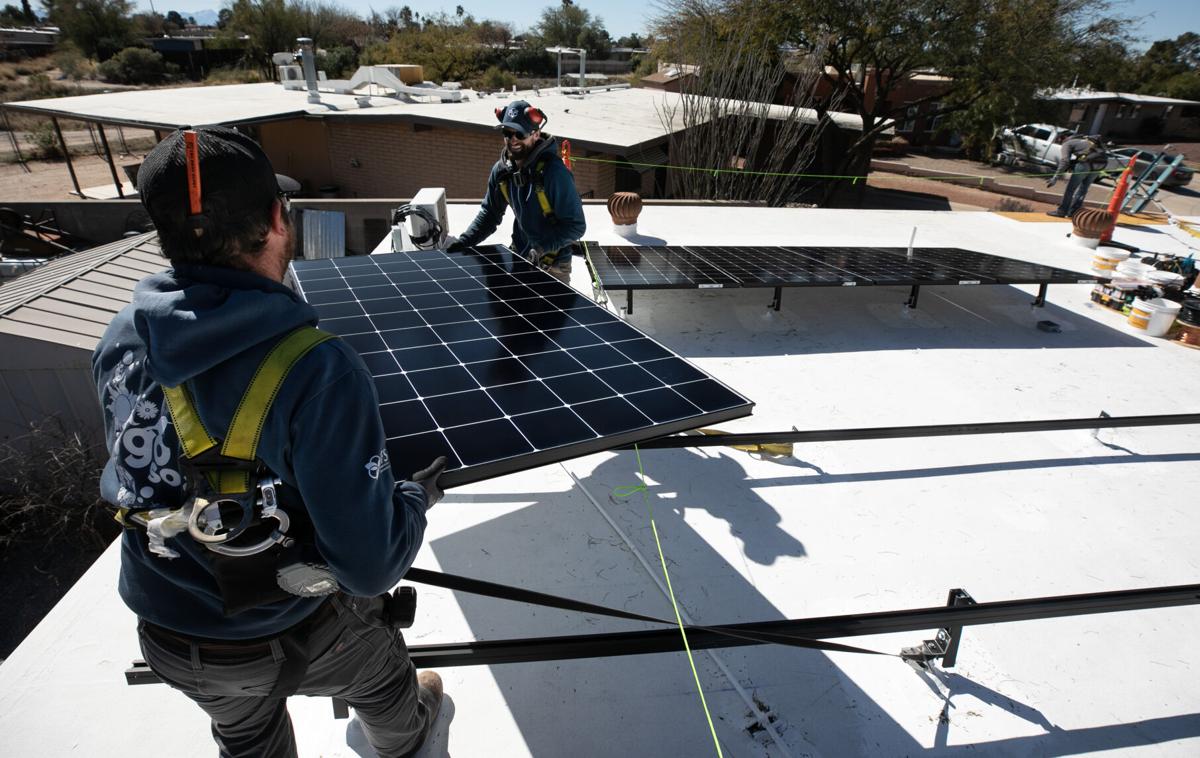Question: I am thinking about adding solar and have these questions:
What would be the best solar setup at my home?
How much will it save me on my electric bill?
Will I still be able or need to super cool?
Do I need to consider a solar storage system as well?
Answer: Those questions need to be answered by a reputable solar company, one that is licensed by the Arizona Registrar of Contractors.
It is also essential to consult a company that is customer service-minded rather than just sales-driven. Sam Dunbar, solar and battery integrator, and Anthony Weidenfeller, sales engineer at Sun Valley Solar, a Rosie on the House certified partner, explain the process of ordering a solar system uniquely designed for your home. Both say the best process starts from the first phone call.
In addition to your questions, be ready to answer theirs. The information collected will be used to begin a design process that can help establish potential solutions quickly.
In the first sit-down or face-to-face meeting, you should be presented with a possible system size, layout and preliminary cost. There should not be a fee for this step.
These questions will likely be asked during a discussion. Knowing the answers will help you be prepared to respond accurately and therefore result in better information regarding solutions.
What is your current electrical usage?
Usage is measured in kilowatt hours (kW h) and can be found on your electric utility bill. It will be helpful if you can provide a year’s worth of bills. If not, use whatever you can gather for that first call.
Where is your house located, and what is the layout?
With your address or Assessor Parcel Number (APN), which can be retrieved from your property tax bill, Sun Valley Solar can get a satellite representation of your home. Access to this information provides necessary information about your roof type, orientation and obstacles that might impede solar access.
What is your daily routine? How you occupy your home is essential information when planning power usage.
How many air conditioning units do you have?
Do you have a pool with a variable-speed pump?
Do you have an electric vehicle that requires a charging port?
Are you home all day?
Do you work from home?
These lifestyle questions are critical to understanding how your energy is consumed.
Armed with these answers, your consultant will develop a basic design, including a roof layout. This process leads to developing a budget number for you to consider.
They will also investigate several other facts about your home’s infrastructure. Verifying the location of your home’s Service Entry Section (SES), where power currently enters your home, is another key component for development of the final plan.
Further discussion should revolve around how you will manage the power harnessed by the sun. Will energy be consumed during on-peak or off-peak demand times? Peak times are set by your utility company. In a 24-hour period, on-peak time designates when demand for electricity is highest and most expensive. Off-peak is the time of day energy demand is the lowest, and power is cheaper.
It’s no secret that I am a fan of “super cooling” as a method of managing energy usage. This is but one way to decide when to minimize or maximize your power consumption. Managing usage will affect your bottom line.
Check out some innovative and sometimes overlooked energy-saving strategies that can help you and your wallet survive Tucson's summer swelter.
Regulating your appliances, other than the heating and cooling systems, is another method available to help you manage your consumption.
Managing your consumption is a viable way to control your energy usage. Maximize your use of the sun’s power to balance the amount of power you might need from your electric provider or on the grid.
Q: How can I save the energy from my solar panels?
A: Solar batteries are a helpful tool in energy storage. If no one is home most of the day when solar energy being collected is at its maximum, then your energy consumption should be at its lowest. Battery storage is a tool that can help you balance out the consumption vs. collection curves.
Battery storage systems are quickly becoming the preferred alternative to demand management. There are two significant benefits in using stored power.
Mitigate “on peak” usage: Use stored power, not grid power, during peak demand hours.
Manage power outages: When the grid fails, all the power is out. A solar battery can continue to supply power to your home for several hours. The length of backup time depends entirely on the battery system you choose.
The technology behind solar batteries has improved exponentially over the years. The storage batteries don’t take up much space. And will likely be the next generation of home solar systems.
Q: What is the best payment option, and what kind of return on investment will I get from installing solar?
A: One of the major support features of a comprehensive approach to providing solar power is financing your system. There are multiple options from paying cash, loans and leasing, each with their own distinct permutations for you to consider. You decide what works best for you.
As for return on investment, there are as many answers to this question as there are different systems and different user types. The company you choose should be able to give you a pretty good idea of the overall savings you are likely to receive.
I urge you to do your homework if you are considering a solar system.





